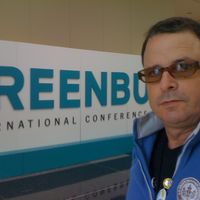All,
I'm conducting a LCC comparative analysis of green roofs in Switzerland and Holland for my MSc. thesis and I would like to evaluate how different green roof designs are evaluated using LEED v4 NC in a non-health care setting. My evaluation concludes that green roofs have the potential to contribute to 6 credits and an intensive green roof is preferred for the reasons described below. An intensive roof can contribute to a total of 8 points while an extensive green roof can contribute to a total of 7 points. Please comment on my evaluation of the credits (below) if you can. Thanks!!
First, allow me to explain my understanding of a green roof.
-Extensive Green Roof:Mimic local landscape and require little maintenance or propagation. Consist of a thin layer growing medium 2.5-15.2cm (1-6 inches), are often inaccessible and composed of inorganic materials.
-Intensive Green Roof:Hosts of a wide range and in some cases trees. Often accessible and provide an amenity similar to a park facility; Consists of a growing medium more than 15.2cm (6 inches) and is composed of a lightweight topsoil mixture of organic and inorganic elements.
My evaluation of the LEED v4 NC credits indicate an intensive green roof is preferred due to accessibility and rain water storage capacity. Alternatively, an extensive green roof is preferred for biodiversity and water use reduction. Due to the fact that the Rainwater Management credit is weighted more, this indicates that an intensive green roof is valued more heavily than an extensive green roof in LEED v4.
- The Sustainable Site, Site Development credit Option 1 – Protect or Restore Habitat (2 points, 1 point for Health Care) focuses on promoting biodiversity by requiring native or adapted vegetation. This credit is satisfied by an extensive green roof which hosts a native plant palette and is typically not accessible to building occupants.
- The Sustainable Site Open Space credit (2 points, 1 point for Health Care) focuses on connecting building occupants with the outdoors by mandating 30% of the total site area to be open space and 25% of this must be vegetated. Therefore, an accessible green roof, typically an intensive green roof,
- Sustainable Site credit Rainwater Management - Option 1 (2-3 points, 1-2 points for Healthcare) mandates green infrastructure designs to reduce rainwater runoff and improve water quality. The point criteria weights a higher scoring on property areas which retain the most rainfall (United States Green Building Council, 2014, p. 183), indicating preference for an intensive green roof due to the higher capacity to store more water in a thicker substrate.
- Sustainable Sites credit Heat Island Effect (1-2 points, 1 point for Healthcare) intends “to minimize effects on microclimates and human and wildlife habitats by reducing heat islands.” Option 1 is highly dependent on vegetated roofs while Option 2 can be completely satisfied with a vegetated roof. However, there is no specification on the plant types required or whether it needs to be accessible indicating it can be satisfied by any green roof.
- Water Efficiency credit Outdoor Water Use Reduction (1-2 points, 1 point healthcare) intends “to reduce outdoor water consumption” by requiring no permanent irrigation systems or reducing the project’s landscape water requirement (LWR) by a minimum of 50%. This credit is affected by whether or not the green roof is irrigated; extensive green roofs are typically not irrigated and would contribute better to satisfying this credit.
- Indoor Environmental Quality credit Quality Views (1 point, 1-2 points Health care) intends “to give building occupants a connection to the natural outdoor environment by providing quality views." To satisfy this requirement all 75% of regularly occupied spaces must provide occupants with direct views of specific criteria, one of which can be satisfied with viewable flora or vegetation. Any green roof design can impacts this credit requirement, as long as it is viewable from a regularly occupied space.



Add new comment
To post a comment, you need to register for a LEEDuser Basic membership (free) or login to your existing profile.